Witches have a long history in storytelling, but they aren’t always scary. They aren’t always Baba Yaga types, sometimes murderous, sometimes helpful. There’s another variety of crone who is a ribald storyteller. She’s related to the classic witch, but her function in stories is quite different.
She is known as the burlesque witch. For a definition of burlesque, see here.
The burlesque witch is a direct descendent of The Wife of Bath.
The Wife of Bath: A Biography
Ever since her triumphant debut in Chaucer’s Canterbury Tales, the Wife of Bath, arguably the first ordinary and recognisably real woman in English literature, has obsessed readers–from Shakespeare to James Joyce, Voltaire to Pasolini, Dryden to Zadie Smith. Few literary characters have led such colourful lives or matched her influence or capacity for reinvention in poetry, drama, fiction, and film. In The Wife of Bath: A Biography (Princeton UP, 2023), Marion Turner tells the fascinating story of where Chaucer’s favourite character came from, how she related to real medieval women, and where her many travels have taken her since the fourteenth century, from Falstaff and Molly Bloom to #MeToo and Black Lives Matter.
A sexually active and funny working woman, the Wife of Bath, also known as Alison, talks explicitly about sexual pleasure. She is also a victim of domestic abuse who tells a story of rape and redemption. Formed from misogynist sources, she plays with stereotypes. Turner sets Alison’s fictional story alongside the lives of real medieval women–from a maid who travelled around Europe, abandoned her employer, and forged a new career in Rome to a duchess who married her fourth husband, a teenager, when she was sixty-five. Turner also tells the incredible story of Alison’s post-medieval life, from seventeenth-century ballads and Polish communist pop art to her reclamation by postcolonial Black British women writers.
Entertaining and enlightening, funny and provocative, The Wife of Bath is a one-of-a-kind history of a literary and feminist icon who continues to capture the imagination of readers.
New Books Network
What is her name?
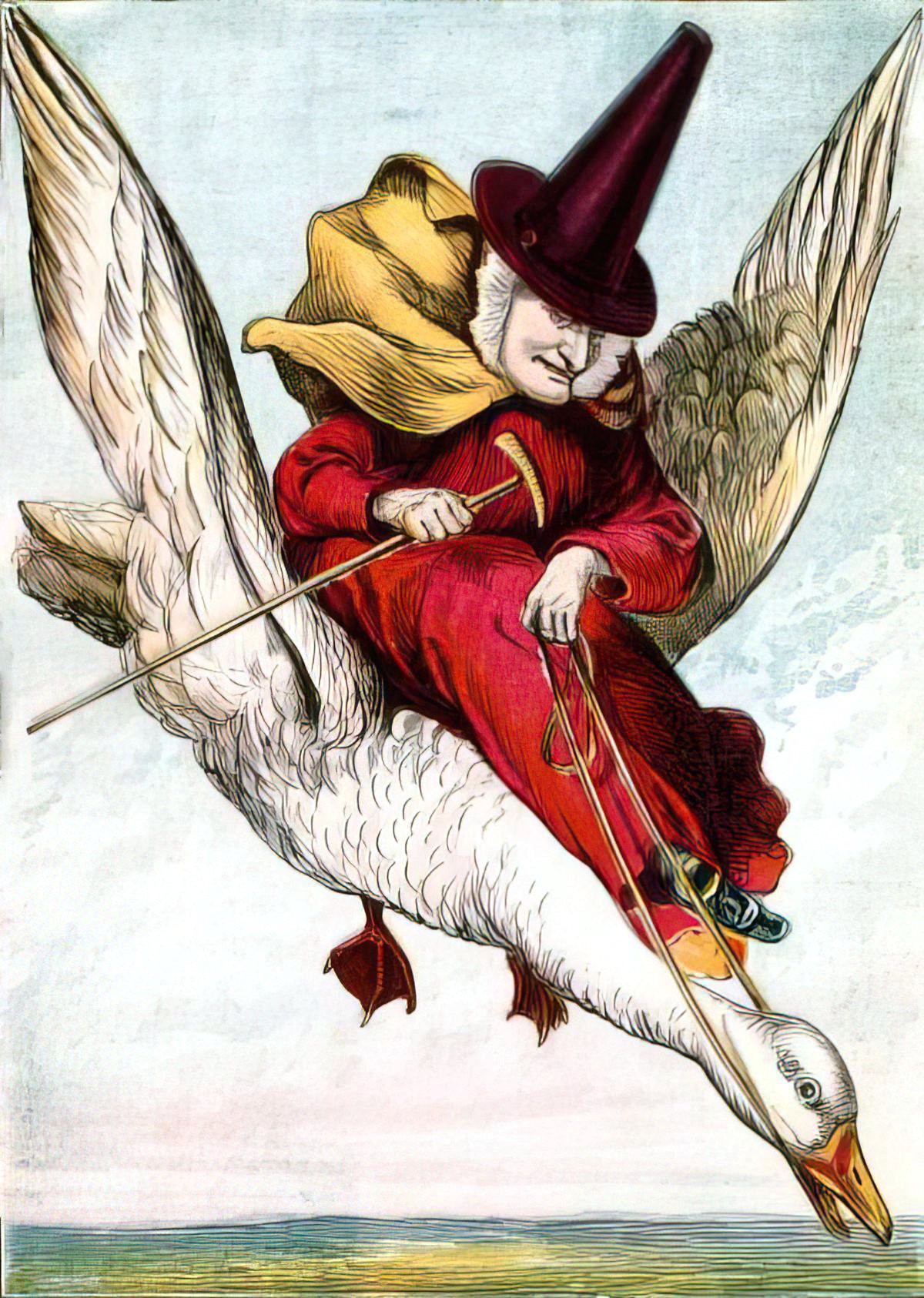
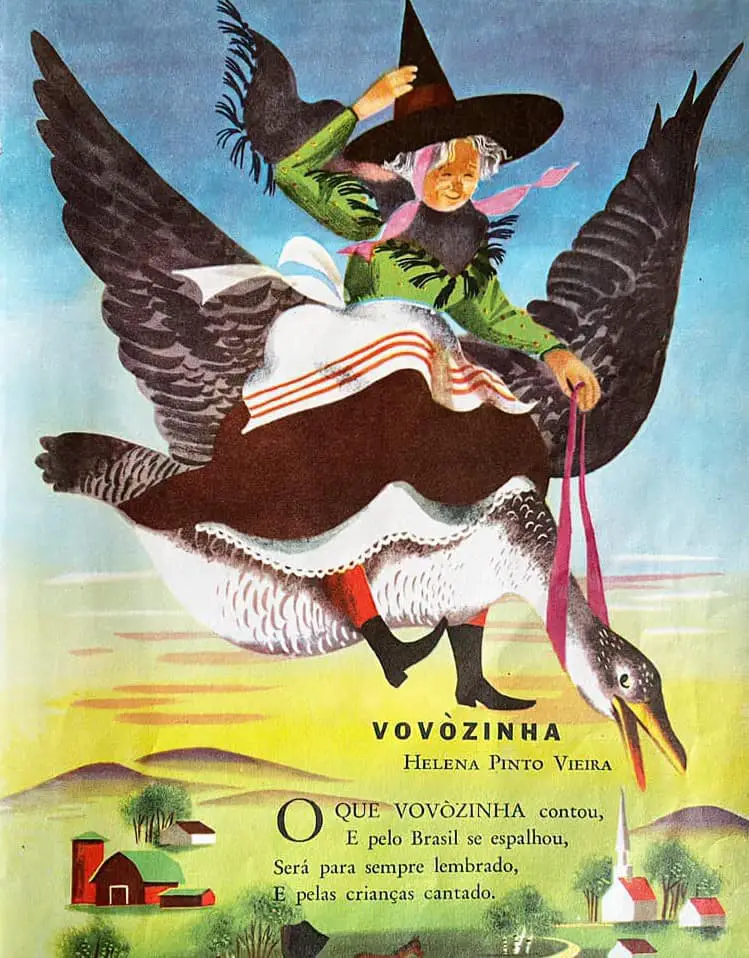
From eighteenth century nursery rhymes:
What does she look like?
As Marina Warner describes in From The Beast To The Blonde:
- crone features
- chapfallen jaw
- toothless bight of chin and nose in profile
- a Punch-like proboscis
- carries a stick
- wears a conical hat
- apron and petticoats
The Burlesque Witch In Greek Myth
There is a fearsome cannibalistic mother from Greek myth, unable to save her own babies, and so vengeful against life, the universe and everything that she won’t let anyone else have babies either. So she eats children. Her name is Lamia.
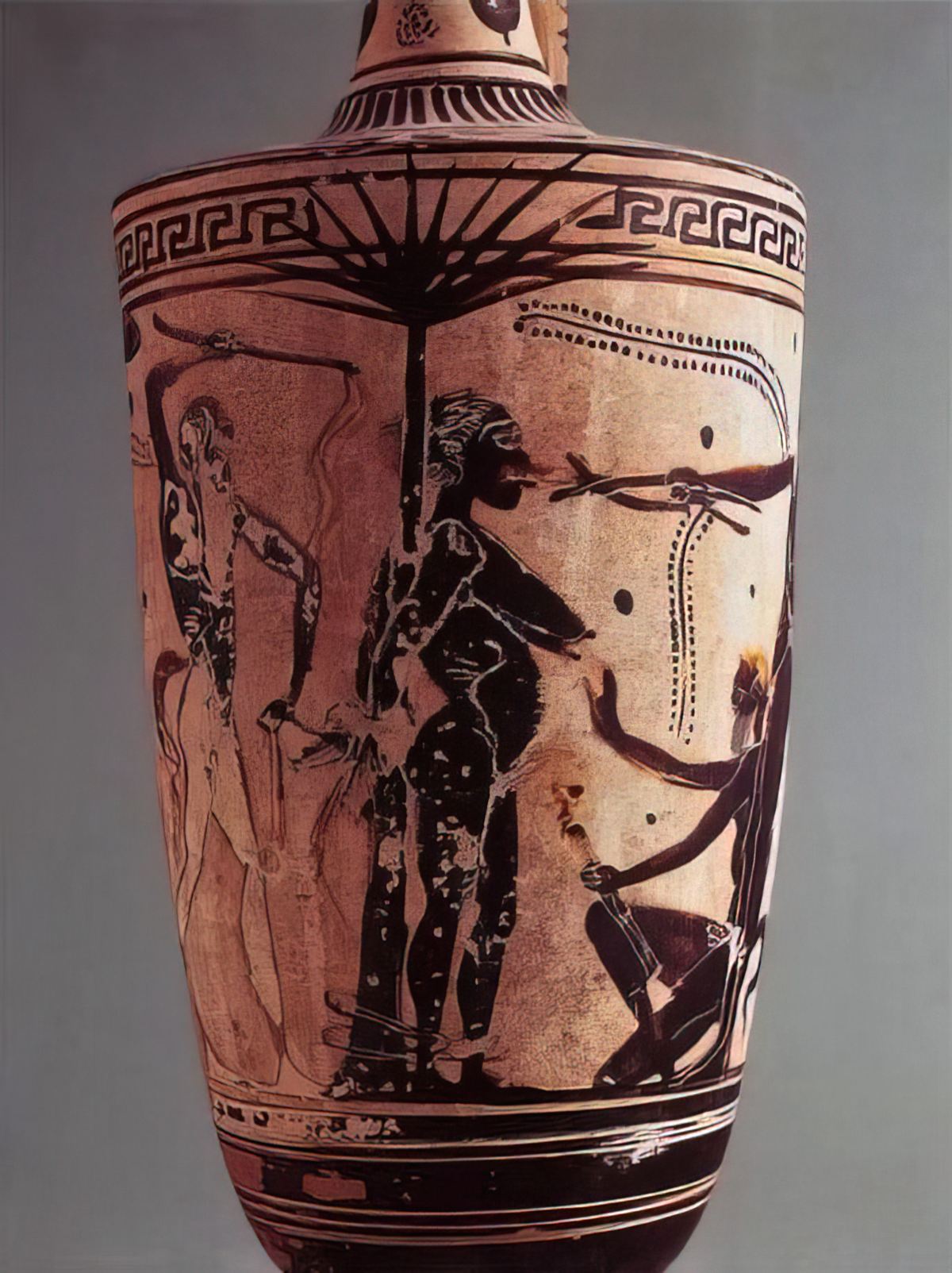
Diane Purkiss describes Lamia like this:
In a culture that values youth and finds age repulsive, like that of Ancient Greece (or like our own culture), Lamia’s predatory abduction of youth might signify the way children and parents are divided by age. … Lamia is invariably depicted marked by the terrible stigmata of the childbearing woman. A fifth-century Athenian vas shows her as a naked woman tied to a palm tree, and tortured by satyrs. She has a sagging belly and pendulous breasts, signs of ageing, and in particular, of the ageing that follows childbearing. The result of being taken over by that demonic child inside is to become an object of fright to the very child who has stolen her youth. In trying to rob children of their youth to restore her own, Lamia is a picture of the tangled feelings of the mother whose own youth has been absorbed, eaten, by the child she bears.
Diane Purkiss, Troublesome Things: A history of fairies and fairy stories
The modern Internet burlesque witch, too, bears the kind of ageing specific to women who have given birth, though she is never shown with her (now grown) children. She is clearly a descendent of Lamia, but as happens to all fearsome female mythic creatures, she is either sexualised or rendered laughable. The burlesque witch is an interesting mixture of both, because both of these things have happened: her sexuality is grotesque, and that’s what makes her laughable.
Examples Burlesque Witches in Modern Pop Culture
- Maxine is the cartoon character who most regularly comes through my feed. Maxine is a Hallmark character who has her own Facebook page, of course. She’s a grumpy, wise-cracking old woman.
- You’ll find Maxine characters on many comedy series. The Simpsons gives us Patty and Selma.
- violet crawley quotes is in the Burlesque Witch tradition, but she is of the upper class. One of the main character jokes is that she looks down on the middle-class, because her upper-class status is so fragile.
- Catherine Tate’s Nan is an excellent example of the Burlesque Witch because she has a very reliable habit of being nasty-nice. She’ll be fake lovely, then as soon as someone leaves the room she turns. Nan is simply a modern take on the Baba Yaga character, who can be nice or mean, and we never know what we’re going to get at any given moment.
- Betty White is the standout example. We like to imagine her as she appeared in The Golden Girls. A popular Twitter handle makes use of her name. Its MO is to point out the ridiculousness of politics in particular, from behind the jaded wisdom of an old woman who has seen it all. The real Betty White’s twitter feed is quite different.
- Here in Australia, the Betty White parody account has been emulated, but uses recently retired SBS newsreader Lee Lin Chin as its avatar. Here we get the double comedy factor of an older woman (who is meant to be buttoned-up) crossed with a serious newsreader, who spends all day saying serious things. When ‘Lee Lin Chin’ joined Twitter, a lot of us wondered if this really was Lee Lin Chin. We hadn’t seen much of Lee Lin Chin outside her news reading role, but every Australian can see that her fashion sense masked a flamboyant personality. Now and again we got a glimpse. One famous blooper shows Lee Lin Chin saying, “Who is that handsome…” of a young male news reporter, not realising the camera had flipped back to her. We loved that, and could could imagine this ribald twitter account really was written by Lee Lin Chin, even though the twitter personality was more like that of a hard-drinking frat boy. Lee Lin Chin was also asked to play herself in a series of short films, in which she does play this character.
The Horny Hag
The Burlesque Witch has also been called the “Horny Hag” character trope, especially when she appears in horror such as X, Barbarian and Midsommar:
Anything that we consider repulsive winds up in horror. And often nowhere else [Horror] is a pressure gasket for certain aspects of our national imagination. When we watch horror films we’re in the theatre because we want to see our fears and anxieties sublimated into some form we can understand.
What the hag provides is a sublimation of our fear of ageing. First, our own ageing. The idea that we will continue on but mired in a body that is physically failing us and we’ll have to reconcile our personhood, which is continuous throughout our lives. You know, I’m not a different person as a 35-year-old as I was as a 22-year-old. […]
The other major factor at play is our discomfort with our mothers, I mean older women in our lives. Our feelings of guilt for them. I don’t think there is much debate to be had that Americans do not value older women. A lot of older people wind up in care facilities. So you have this phantom in your mind this knowledge you are failing the person who raised you, that you are not meeting their needs, that they are out there suffering.
And of course there’s also the primal fear that your mother, the person who bore you and nursed you, loved you and raised you will grow too old to do those things.
It’s also something we feel a lot of revulsion towards. Our mother is supposed to take care of us. The idea of dealing with our mother in an abject state where she has desperate needs is scary. […]
We have tremendous cultural guilt about the ways — large and small — we strip [older women] from our stories by pushing them physically out of our lives, pushing them into seclusion, denying them agency. And whenever this kind of systemic injustice happens there’s always an anxiety in the perpetrators that it will be evened out. That somehow the oppressed will exact retribution from you. I think we’re very afraid of what we’ve done to old women. They exist to us as a record of all the suffering in our culture and once you no longer want to make love to them, or once they are no longer a resource to be extracted, then you have to confront what your desires have done to them. […]
More generally there’s also a tremendous fear of an undesirable woman with sexual agency. The idea that people who control the sexual economy could be subject to the whims of someone who is assumed to have no value in that economy. Culturally we’re very afraid of women coming back for their pound of flesh. […]
It is deeper and more complicated than [guilt]. To men especially, Dan O’Bannon’s screenplay for Alien […] What this movie does is recontextualize our cultural ideas about rape and forced pregnancy, applying them to anyone and everyone. Suddenly this is not something that only woman have to walk around imagining. Suddenly there’s a monstrous intruder that can do the same thing to men. It can inflict itself on them, impregnate them, force them to carry its offspring to term even if it kills them.
The hag seems to fulfil a similar purpose. Sexual assault is also a very common experience for men and those images are ways for them to externalise and process those experiences. It’s mostly men’s anxieties that we see in horror. And like all film it’s dominated by men and so we are, to an extent, trapped in their blind with them. The hag has no need for men. She might take something from them. But they’re not her partner, not her equal, they don’t have her knowledge.
Interviewer Brittany Luse: Giving and taking and controlling resources is a part of masculinity and if you can’t do that, are you even a man?
Right. And at the most basic level, everything’s been taken off the table. You can’t even impregnate these figures. That can no longer happen. [Hags] cannot be coerced or controlled in that way. […]
Interviewer: Talk to me more about the inverted pregnancy fear.
So, here’s my two cents on this. Your mother brings you into the world when you are at your least capable, your weakest, your most ignorant. You have no conception of the world around you. The hag is waiting at the other end of your life, waiting to take you back into that same dark.
Interviewer: A woman brought you into this world and another woman is going to take you out.
Right. She’ll make you powerless. She will expose your ignorance and your weakness and unperson you.
The new “final girl” in horror; plus, who’s afraid of a horny hag? It’s Been A Minute podcast 24 October 2023, Gretchen Felker-Martin
They go on to say that we don’t see Black women cast into the role of horny hag nearly so much. That’s because the stereotypes around Black women were cemented before The Civil War. Older Black women are earthy, wise, homey, always available. Despite being magical, they’re more likely to be helpful.
White women are (at least) seen as human beings, which is why they are cast as hags as a way of dealing with them.
The Internet Burlesque Witch
I’ve seen plenty of burlesque witches on my mother and aunties’ social media feeds. Women who share these memes tend to share images of women older than they are, in true ‘old age’ rather than ‘late middle age’. The joke is that an old woman:
- Sees herself as still sexually attractive/active
- Sees herself as not still sexually attractive/active.
This juxtaposition is exactly in line with the messaging boomer women were forced to grow up with. Note this was aimed at women. Women could be sexy, sure, but they could not be sexy without also being bad.
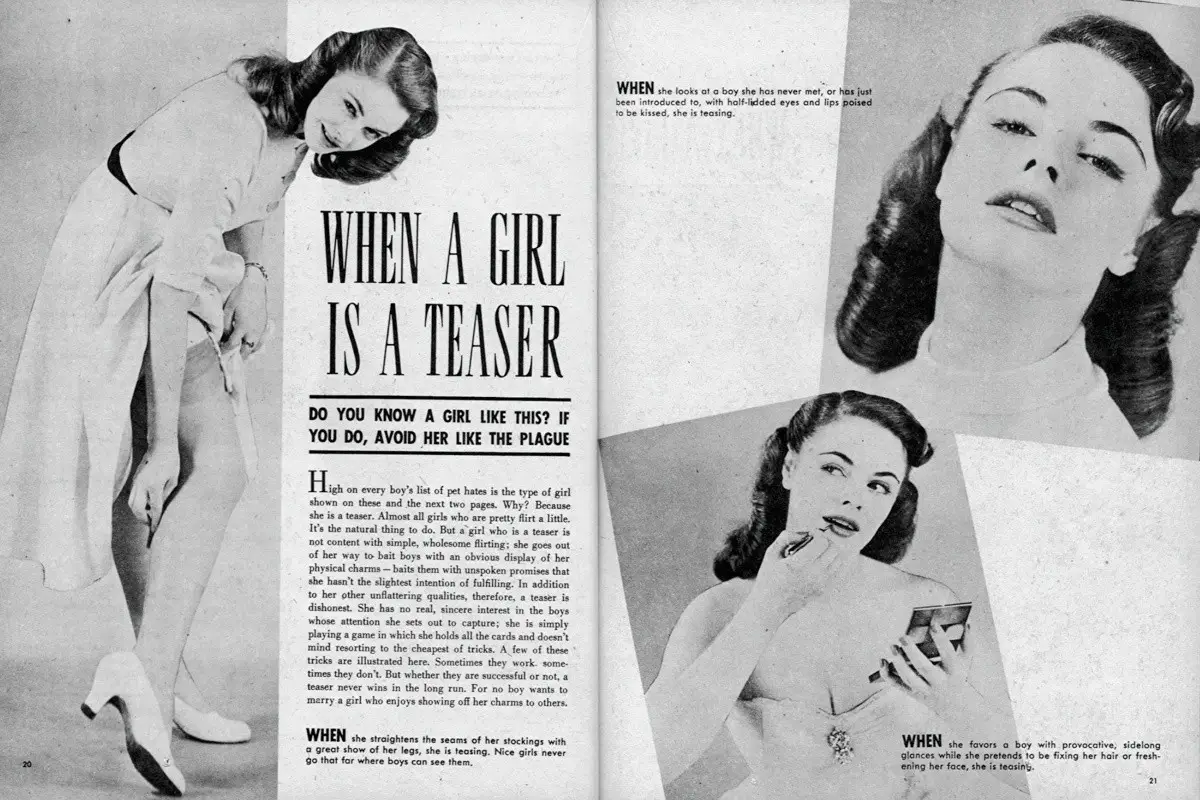
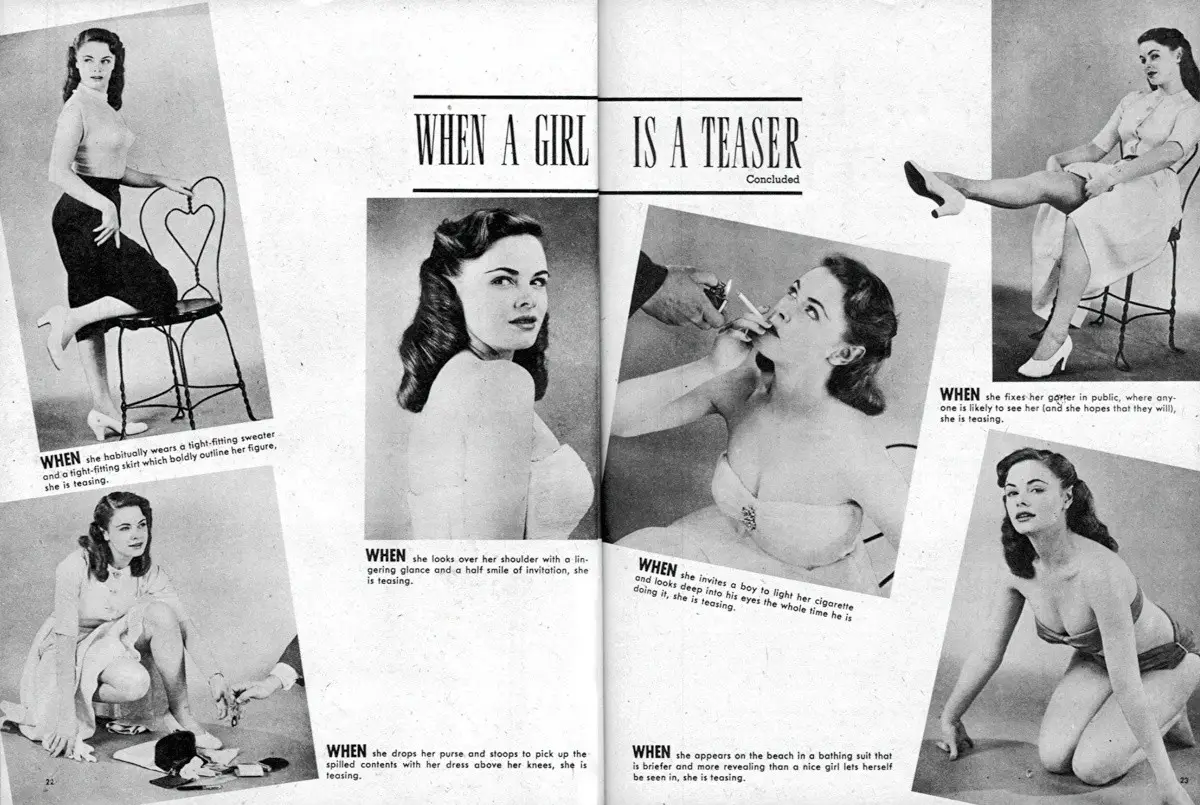
The burlesque witch can be mined for sexual comedy in either direction. When older women make the joke, it tends to overturn stereotypes about old women.
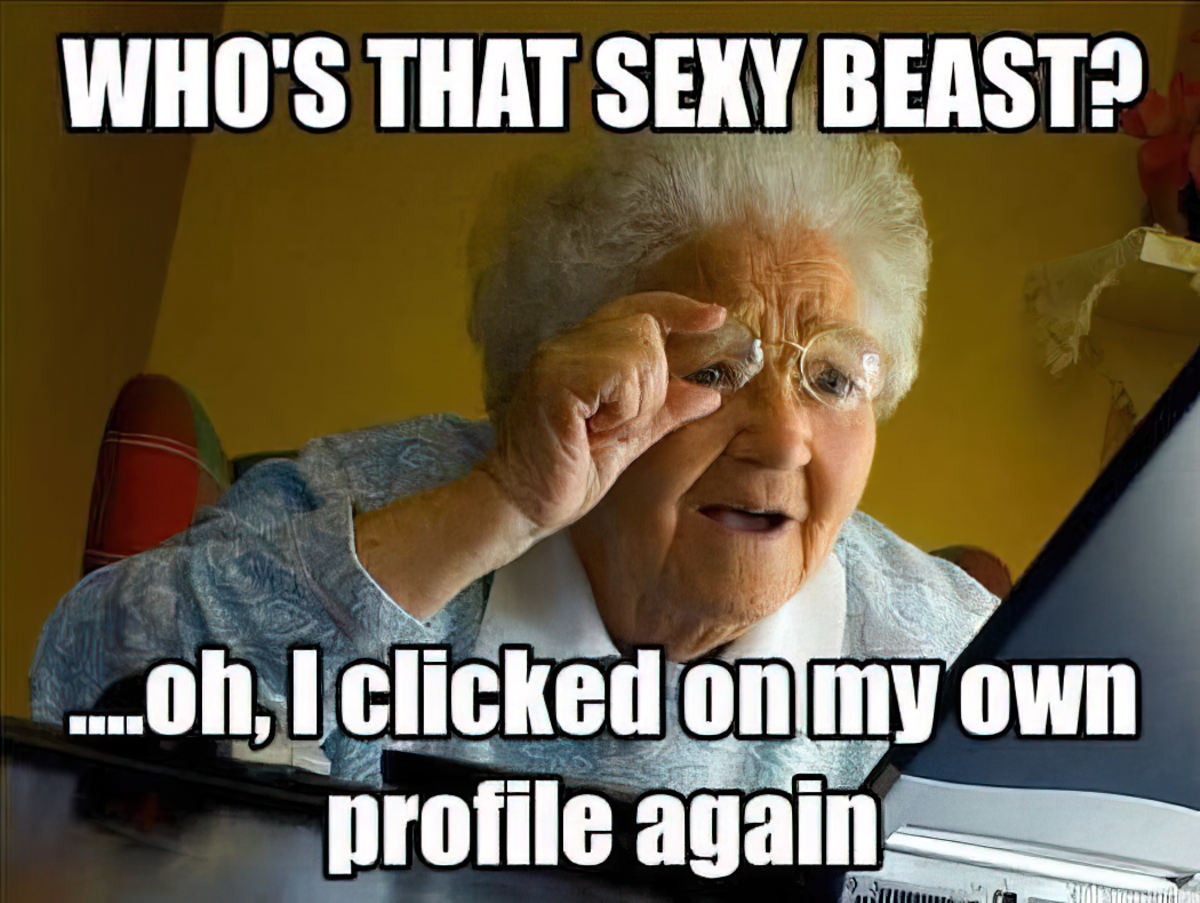
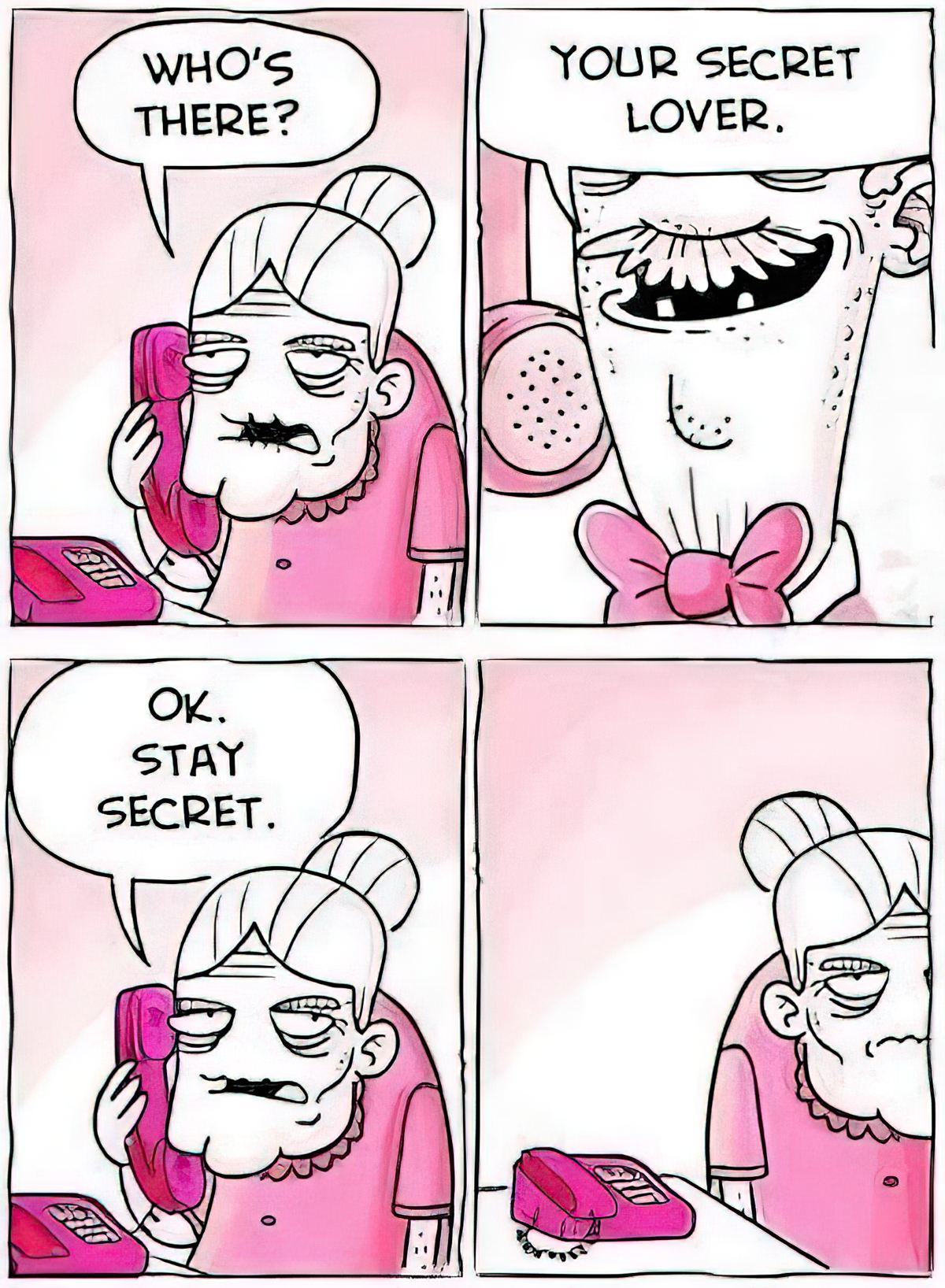
Sometimes the burlesque witch is simply making light out of old age. Often the joke is that she feels like a young woman stuck in an old woman’s body:
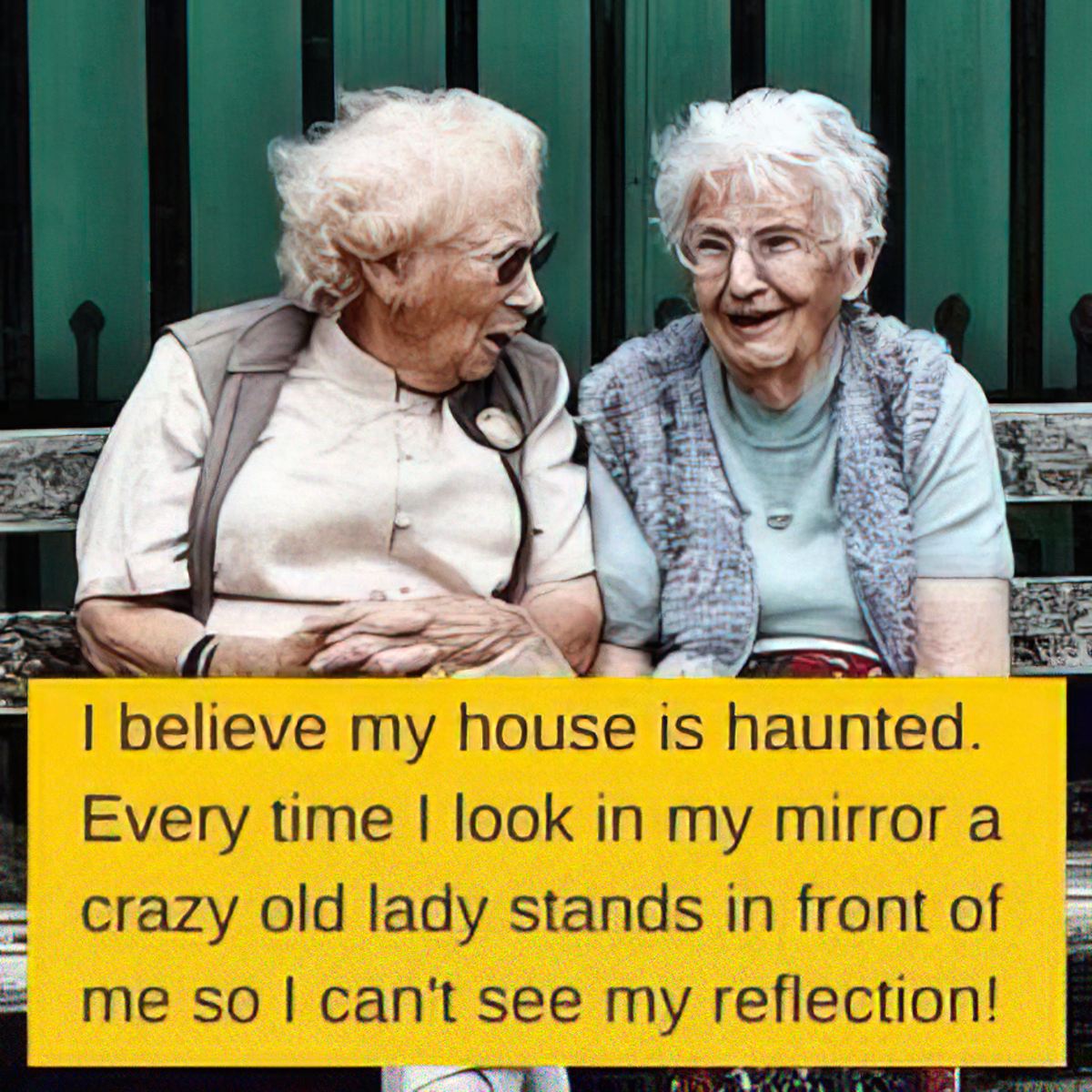
But of course, old women are appropriated by younger people making ageist memes based on the regular tropes:
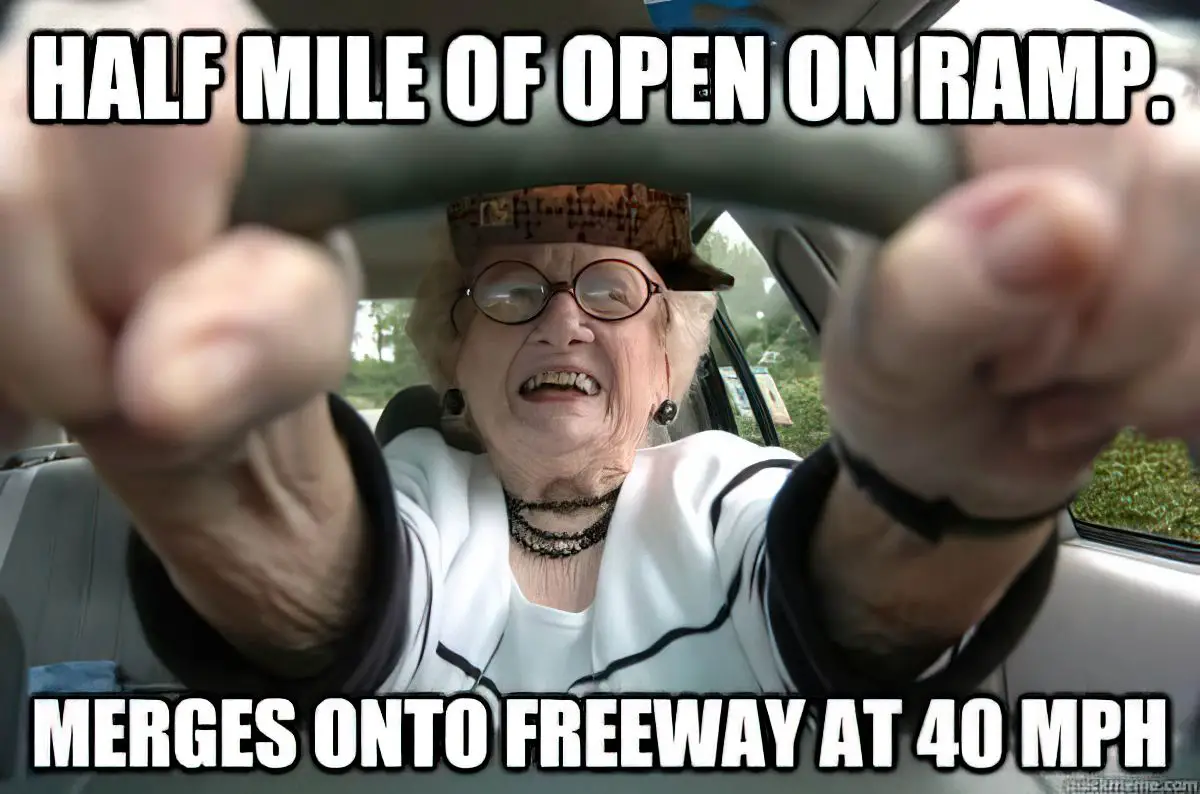
Others are based on stereotypes but are shared by older women themselves:

Features of the Internet Burlesque Witch

- Sagging breasts (often exaggeratedly so — a common joke is that they drag on the ground, be tucked into a belt or be mistaken for testicles)
- Fashion sense is youthful. She wears clothing more typically worn by teenagers, and doesn’t care.
- Loves to drink and although she doesn’t feel bad about this, she does mention it a lot.
- She carries a lot of middle-aged belly fat, but we can imagine she was ‘curvy’ in her youth.
- She eschews exercise, except for ‘exercise’ such as picking up massive wine bottles, pulling the lever on her recliner and other minimal efforts.
- Chocolate is a favourite food, standing in for any of life’s little luxuries.
- She speaks her mind, and is often depicted with a large mouth wide open.
- Rather than a chapfallen chin, she has a double/triple/quadruple chin.
The Rough-talking Grandmother
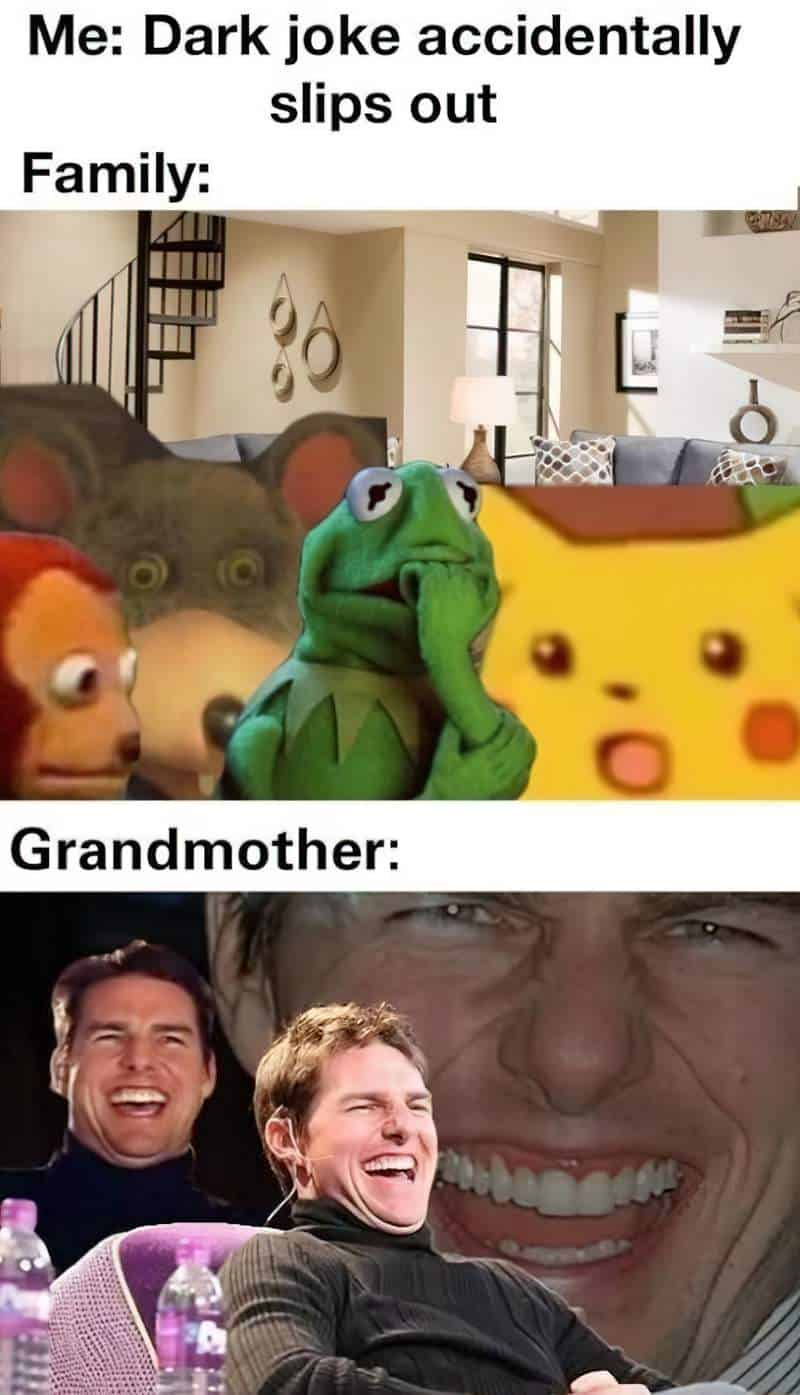
Anyone who has known an older woman left alone to take care of a husband in declining health will recognize the exasperated tone and facial expression Kate uses whenever she speaks to Woody. David, in contrast, is unfailingly patient and calm, like a cross between a therapist and Mr. Rogers, when he talks to his taciturn and pigheaded father, perhaps because he knows when the trip is over, his father’s care will go back to being Kate’s responsibility and will remain so until he dies–or she does.
We can see that Kate, direct and bereft of tact, is supposed to be a refreshing change from the smiling, always forgiving grandmothers of yore, but seeing her yell and swear reminds me of every role Betty White has played in recent years, the same role that goes to many other actresses once they hit 65.
Cute Old Ladies Who Talk Dirty in ‘Nebraska’ and ‘Philomena’ at Bitch Flicks
